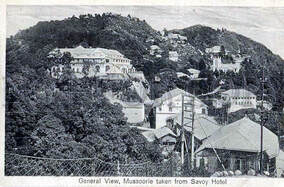 By M.P. Pellicer | Stranger Than Fiction Stories On September 19, 1911 Lady Frances M. Garnett-Orme was found dead in her room at the Savoy Hotel in the hill station of Mussoorie in northern India. The body was carefully laid out, as if posed after she died, and the doors were locked from the inside. 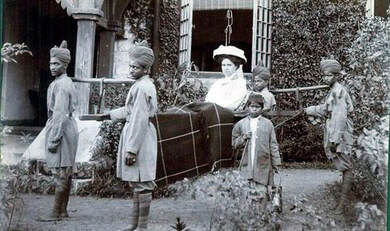 English lady in sedan chair c.1895 English lady in sedan chair c.1895 A post mortem examination found the presence of prussic acid. Two months later her companion Eva Mountstevens was arrested at Jhansi, after she left Lucknow. The women had been staying at the Savoy Hotel, which was a favorite of the wealthier British Raj who lived in the Provinces of Agra and Oudh. To escape the summer heat Mussoorie had become a favorite destination since 1838. The Savoy was built in 1902 on 11 acres, overlooking the Himalayas. Miss Garnett Orme had been living in India for the last 16 or 17 years at a house in Lucknow, where she spent most of her time. She occasionally visited her family in England. Miss Mountstevens (erroneously reported as Mountstephens), 35, had been her companion since April, 1911, when they stayed at another hotel in Mussoorie. They came to the Savoy in September. The women had met 3 or 4 years before at Naini Tal, where they discovered they were distantly related through marriage. 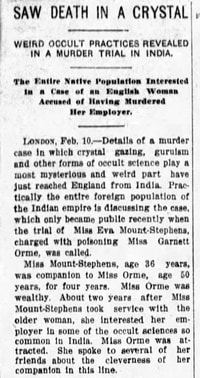 The story of the death Lady Garnett Orme c.1912 The story of the death Lady Garnett Orme c.1912 Eva Mountstevens left shortly before the lady's death to Lucknow, which is why it took two months before the authorities caught up with her. One of the most incriminating clues against her was that she benefited greatly under the term of Garnett Orme's will. In February, 1912 Miss Mountstevens was put on trial at the High Court at Calcutta on the charge of poisoning her benefactress. What made the story even more sensational was the rumor there was a "strong suggestion of occultism". It was reported the companion was involved in the mysteries of the crystal globe, and involved Lady Garnett Orme in it, to the point that she foresaw her death while gazing in the crystal globe. The lady was described as a lonely 50-year-old, who believed so strongly in the vision that she prepared for own death. She had described Eva Mountstevens as a "great authority on spiritualism and a perfect medium to her acquaintances". 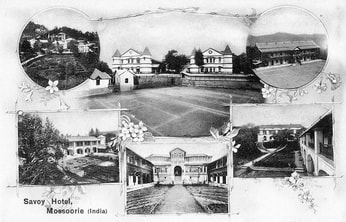 The many faces of The Savoy, Mussoorie, c. turn of the 20th century. The many faces of The Savoy, Mussoorie, c. turn of the 20th century. The prosecution alleged she used prussic acid, and had motive and opportunity to commit the crime. She was accused also of making false statements, in which she denied buying the poison which killed Lady Garnett Orme. The defense claimed she committed suicide, spurred by the death of Mr. Grant, her fiancée in 1897. This event caused her great grief and coupled with an illness, was believed to have driven her to commit the act of self destruction. During the trial in 1912, Alexander Grant testified that Miss Orme came to India in 1893, when she was engaged to his brother. A year later his brother died, while she traveled to England to visit her family. He had maintained his friendship with her, and said she was influenced easily by other persons. It was pointed out that Miss Orme used to always wear around her neck two keys and a charm, which she said had been given to her by the spirit of a Mrs. Winter, "her guardian angel." She once remarked that Miss Mountstevens had the power to make people ill if they offended her. During the trial it was alleged that Mounstevens told Miss Orme she would find death in England, every time spoke of wanting to take a trip home. She also complained that if "Miss Orme went home she would marry a doctor she was engaged to in England, and leave all her money to him." In March 1912, Eva Mountstevens was acquitted of the murder charge. She was left as the sole inheritor of Miss Orme's fortune, which was £12,000 with other personal effects. This was contested by Hunter Garnett Orme, who claimed his sister did not have a sound mind when she executed the will. In October, 1912, the courts dismissed Mountstevens' application for probate on the ground of fraud and undue influence in connection with spiritualism and crystal gazing. The judgement gave probate to Miss Orme's relatives. 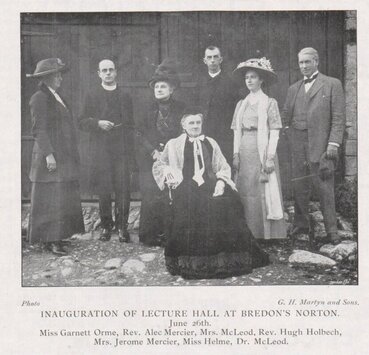 Sister of Frances Garnett Orme, 1st lady on the left. c. Jan. 1912 Sister of Frances Garnett Orme, 1st lady on the left. c. Jan. 1912 What would never be allowed as evidence in court proceedings, could not stifle the gossip that swirled among the Raj and those in England, which was that Eva Mountstevens had tampered with Lady Garnett Orme's bottle of sodium bicarbonate by adding prussic acid to it. The other alternate explanation was that through use of her spiritual powers, she had induced her benefactress to add the poison herself. The murder of Lady Garnett Orme appears to have inspired Rudyard Kipling (1865-1936) when he wrote to Sir Arthur Conan Doyle (1859-1930) about a story with an element of "murder by suggestion". In their correspondence the crime at the Savoy in 1911 is mentioned. Kipling and Conan Doyle met in November, 1894 when Conan Doyle and his brother spent two days at Kipling's American home while they toured the country. They continued their friendship via correspondence, and eventually they became distant neighbors in Sussex, when Kipling moved back to England. They read each other's works as they were published. They were both Freemasons and held an interest in the paranormal. Kipling was also a friend of William John Dwyer Burkitt, that presided over the murder trial. They were both members of the Masonic lodge Independence with Philanthropy No. 391. Judge Burkitt stated at the conclusion of the trial, that the truth of what happened to Frances Garnett Orme would most probably never be learned. He died on May 19, 1918, age 46 from pneumonia and is buried in Nainital. According to author Ruskin Bond, Agatha Christie's first novel The Mysterious Affair at Styles published in 1920, was supposedly inspired by the murder of Lady Garnett Orme. The story introduced the detective Hercule Poirot. Other unverified rumors attached to this crime was that Eva Mountstevens returned to England, and Lady Garnett-Orme's physician lost his practice in Mussoorie when whispers swirled that he had conspired with Mountstevens to murder the older woman. A disturbing coincidence if indeed it was one, was the death of Charles Jackson, a painter known to those involved in the case who died two months after Lady Garnett-Orme, supposedly of cholera. Whether he had contact with Eva Mountstevens or there was another reason, police decided to exhume the body on December 23, 1911 and found it to be well-preserved, a sure sign of arsenic poisoning. 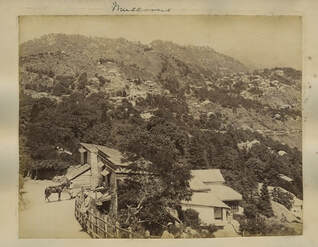 View of Mussoorie c.1890s View of Mussoorie c.1890s The Garnett Orme family's original surname was Robinson. In 1882, they were allowed by royal decree to change it. Interestingly enough, in 1905 the Garnett Orme family was involved in the excavations in Egypt, and discovery of the temple of King Mentunetep III of the 11th dynasty (2500 B.C.). Perhaps this inspired Agatha Christie to write the short story The Adventure of the Egyptian Tomb (1923) where Detective Poirot investigates the death of people that were present at the opening of the tomb of the dead Pharaoh Men-He-Rah. It is not surprising that Frances Garnett Orme is said to haunt The Savoy, supposedly looking for her killer. But in truth if she died by her own hand, there is no mystery there; if it was her greedy companion it came as no surprise to her. Perhaps what binds Frances to this earth, is that the afterlife is not what she thought it would be after spending all that time gazing at a crystal ball. Sources - The Cheltenham Looker, The Lancaster Gazette, The Leeds Mercury
0 Comments
Your comment will be posted after it is approved.
Leave a Reply. |
Stranger Than Fiction StoriesM.P. PellicerAuthor, Narrator and Producer Archives
July 2024
Categories
All
|
Stories of the Supernatural
- Stories of the Supernatural
- Miami Ghost Chronicles
- M.P. Pellicer | Author
- Stranger Than Fiction Stories
- Eerie News
- Supernatural Storytime
-
Astrology Today
- Tarot
- Horoscope
- Zodiac
-
Haunted Places
- Animal Hauntings
- Belleview Biltmore Hotel
- Bobby Mackey's Honky Tonk
- Brookdale Lodge
- Chacachacare Island
- Coral Castle
- Drayton Hall Plantation
- Jonathan Dickinson State Park
- Kreischer Mansion
- Miami Biltmore Hotel
- Miami Forgotten Properties
- Myrtles Plantation
- Pinewood Cemetery
- Rolling Hills Asylum
- St. Ann's Retreat
- Stranahan Cromartie House
- The Devil Tree
- Trans-Allegheny Lunatic Asylum
- West Virginia Penitentiary
- Paranormal Podcasts
"When misguided public opinion honors what is despicable and despises what is honorable, punishes virtue and rewards vice, encourages what is harmful and discourages what is useful, applauds falsehood and smothers truth under indifference or insult, a nation turns its back on progress and can be restored only by the terrible lessons of catastrophe."
- Frederic Bastiat
- Frederic Bastiat

Copyright © 2009-2024 Eleventh Hour LLC. All Rights Reserved ®
DISCLAIMER
DISCLAIMER
 RSS Feed
RSS Feed
















